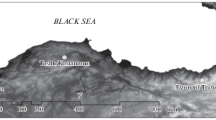Abstract
During a long-term study of individually marked, free-living male great bustards captured as chicks and radio-tracked through several years in Spain, we studied the development with age of two secondary sex traits, the moustachial feathers and the neck plumage pattern. Juvenile males acquired full adult plumage between their fourth and seventh years. The main changes occurred at the neck, coinciding with the onset of sexual maturity. The grey colour typical of immature males turned to ivory white around the fourth to fifth spring, and a gradual increase was appreciated in adults in the brightness of the white colour of the upper neck and in the contrast between this and a progressively more intense chestnut brown at the neck base. Based on these changes, we proposed four neck plumage patterns that can be used to differentiate male age classes during the mating period. The development of moustachial feathers showed more interindividual variability and was not as useful as the neck plumage to estimate male age.


Similar content being viewed by others
References
Alonso JA, Martín E, Alonso JC, Morales MB (1996) Vergleichende Analyse der Markierungsmethoden für juvenile Grosstrappen (Otis t. tarda L., 1758) im Feld. Naturschutz Landschaftspflege Brandenburg 1/2:80–83
Alonso JC, Alonso JA (1992) Male-biased dispersal in the great bustard Otis tarda. Ornis Scand 23:81–88
Alonso JC, Martin E, Alonso JA, Morales MB (1998) Proximate and ultimate causes of natal dispersal in the great bustard Otis tarda. Behav Ecol 9:243–252
Carranza J, Hidalgo SJ (1993) Condition-dependence and sex traits in the male great bustard. Ethology 94:187–200
Cramp S, Simmons KEL (eds) (1980) The birds of the western Palearctic, vol 2. Oxford University Press, Oxford
England MD (1966) Great bustards in Portugal. Br Birds 59:22–27
Gewalt W (1959) Die Grosstrappe. Ziemsen, Wittenberg-Lutherstadt
Gewalt W (1965) Formverändernde Strukturen am Hals der männlichen Grosstrappe. Bonn Zool Beitr 16:288–300
Glutz UN, Bauer KM, Bezzel E (eds) (1973) Handbuch der Vögel Mitteleuropas, vol 5. Akademische Verlagsgesellschaft, Frankfurt am Main
Hidalgo SJ, Carranza J (1990) Ecología y comportamiento de la avutarda (Otis tarda L.). Universidad de Extremadura, Cáceres
Magaña M (2006) El sistema reproductivo de la Avutarda (Otis tarda). Ph.D. thesis, Universidad Complutense, Madrid
Martin CA, Alonso JC, Alonso JA, Morales MB, Pitra C (2000) An approach to sexing young great bustards Otis tarda using discriminant analysis and molecular techniques. Bird Study 47:147–153
Morales MB, Alonso JC, Martin C, Martin E, Alonso J (2003) Male sexual display and attractiveness in the great bustard Otis tarda: the role of body condition. J Ethol 21:51–56
Morales MB, Martín CA (2002) Great bustard. In: BWP update. The birds of the western Paleartic, vol 4, no 3. Oxford University Press, Oxford, pp 217–232
Pitra C, Lieckfeldt D, Alonso JC (2000) Population subdivision in Europe's great bustard inferred from mitochondrial and nuclear DNA sequence variation. Mol Ecol 9:1165–1170
Acknowledgements
This paper is dedicated to Professor Christian Pitra on the occasion of his 65th birthday, 29 April 2006. We are grateful to E. Martín and M. Morales for their help during the fieldwork. Marking permits were provided by the Consejerías de Medio Ambiente of the Junta de Castilla y León and the Comunidad de Madrid. Financial support was partly obtained from projects PB87-0389, PB91-0081, PB94-0068 and PB97-1252 of the Dirección General de Investigación. The capture, handling and marking techniques complied with current Spanish legislation.
Author information
Authors and Affiliations
Corresponding author
Rights and permissions
About this article
Cite this article
Alonso, J.C., Magaña, M., Martín, C.A. et al. Field determination of age in male great bustards (Otis tarda) in spring. Eur J Wildl Res 52, 43–47 (2006). https://doi.org/10.1007/s10344-005-0004-4
Received:
Accepted:
Published:
Issue Date:
DOI: https://doi.org/10.1007/s10344-005-0004-4




